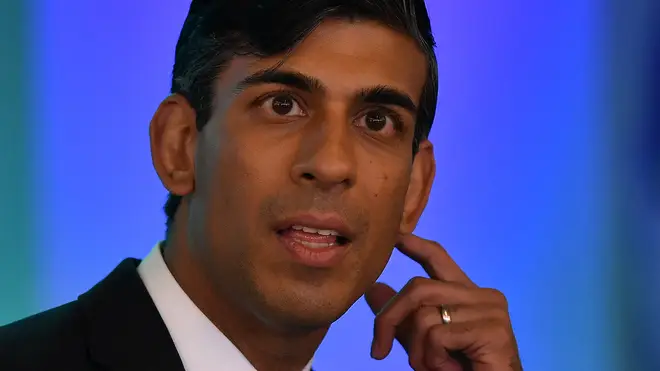
Nick Abbot 10pm - 1am
31 October 2020, 13:14

The latest figures from HMRC have shown 9.6 million jobs were furloughed through the programme.
The Government’s furlough scheme to support workers whose jobs have been impacted by coronavirus is coming to a close after seven months.
Although Chancellor Rishi Sunak has announced another stage of measures to support workers and firms, the end of the furlough scheme is expected to have a notable effect.
At the start of April, companies were handed a lifeline as the Government provided employees with 80% of their wages while they were unable to work as a result of the pandemic.
The furlough scheme has been wound down over the past two months, with the state providing 70% of wages in September and 60% in October.
The latest figures from HMRC have shown 9.6 million jobs were furloughed through the programme.
Here, the PA news agency examines what the end of the furlough scheme means:
What happens next?
From November 1, workers and businesses will instead turn to the Chancellor’s Job Support Scheme (JSS) for support.
Firms able to stay open but impacted by a slump in demand – such as those in Tier 2 areas – were the first offered support through the JSS.
Staff will have to work 20% of their hours to be eligible. The employer must pay for at least an extra 4% of total wages to cover some hours not worked, with the Government paying another 49%.
Companies forced to close as a result of Tier 3 restrictions will be eligible for more support through the scheme.
Workers will be paid 67% of their wages – up to a maximum of £2,100 a month – through the JSS, but must be off for a minimum of seven days to be eligible.
What does it mean for workers?
While millions of claims have been made for furloughed jobs, the number of workers on the scheme has steadily reduced as certain sectors have been able to reopen.
The latest figures from the Office for National Statistics estimated 7.5% of the workforce was still on furlough in the fortnight to October 18.
Industry groups and trade unions have warned the end of the scheme will result in a raft of job losses, even if significant numbers of staffs are able to move on to the new scheme.
However workers who move on to the JSS may be better off, with the Government paying 67% of wages rather than the 60% contribution for the week now.
People who do lose their jobs as furlough ends face a tough hiring environment.
LinkedIn data shows job openings are back to pre-pandemic levels, but a surge in jobseeker numbers has formed a difficult situation for those seeking a new role.

What does it mean for business owners?
Bosses were positive about the original furlough scheme, which was used by 1.2 million employers, but raised eyebrows when Mr Sunak announced the next layer of support in his winter economic plan.
However, industry groups were more positive when the fuller JSS was announced weeks later, after Boris Johnson unveiled the Government’s tiered lockdown programme.
While many firms are still expected to make redundancies, these are likely to be most common among smaller companies, with firms that intend to cut more than 100 roles having to have already given 45 days’ notice on job consultations.
What does this mean for taxpayers?
The grand scale of the furlough programme means it is one of the biggest single parts of the Government’s programme of financial support during the pandemic.
The latest HRMC figures estimated around £41.2 billion has so far been spent on the furlough programme.
Mr Sunak’s most recent proposals are expected to cost less than the mammoth furlough scheme.
But with huge uncertainty over how long regional lockdown measures will go on for and how current case numbers will progress, analysts have yet to reveal forecasts regarding the potential cost of JSS.
Who will be most affected by the closure of the furlough scheme?
Hospitality firms were particularly reliant on the programme after being forced to close at the start of the pandemic and thousands of staff have remained on furlough as restrictions have weighed on demand.
However the UK Hospitality trade body, which represents thousands of restaurants, pubs and nightclubs, hailed JSS as “very welcome”.
The arts sector has the highest proportion of workers currently still on furlough, with many venues unable to reopen in accordance with distancing rules.
Travel and retail firms have also heavily relied on furlough, with firms across both areas announcing thousands of redundancies ahead of the closure of the scheme.

Young people have also been particularly impacted by the closure of the programme, with research from the Resolution Foundation showing one in five 18 to 24-year-olds who were furloughed have lost their jobs – with this figure rising to around 40% in Birmingham.
How was the scheme targeted by fraudsters?
Economists were widely positive about the scheme when it was first launched, lauding its approach to keep workers in roles in the hope that demand would return – unlike the US programme based on investing more into unemployment programmes.
However, HMRC officials warned MPs last the month that the furlough scheme is expected to have overpaid by as much as £3.5 billion.
Jim Harra, chief executive of HMRC, told MPs on the Public Accounts Committee the error and fraud rate could have been between 5% and 10%.
The tax authorities have already acted to thwart furlough fraudsters, arresting two people last month as part of a suspected £70,000 fraud.